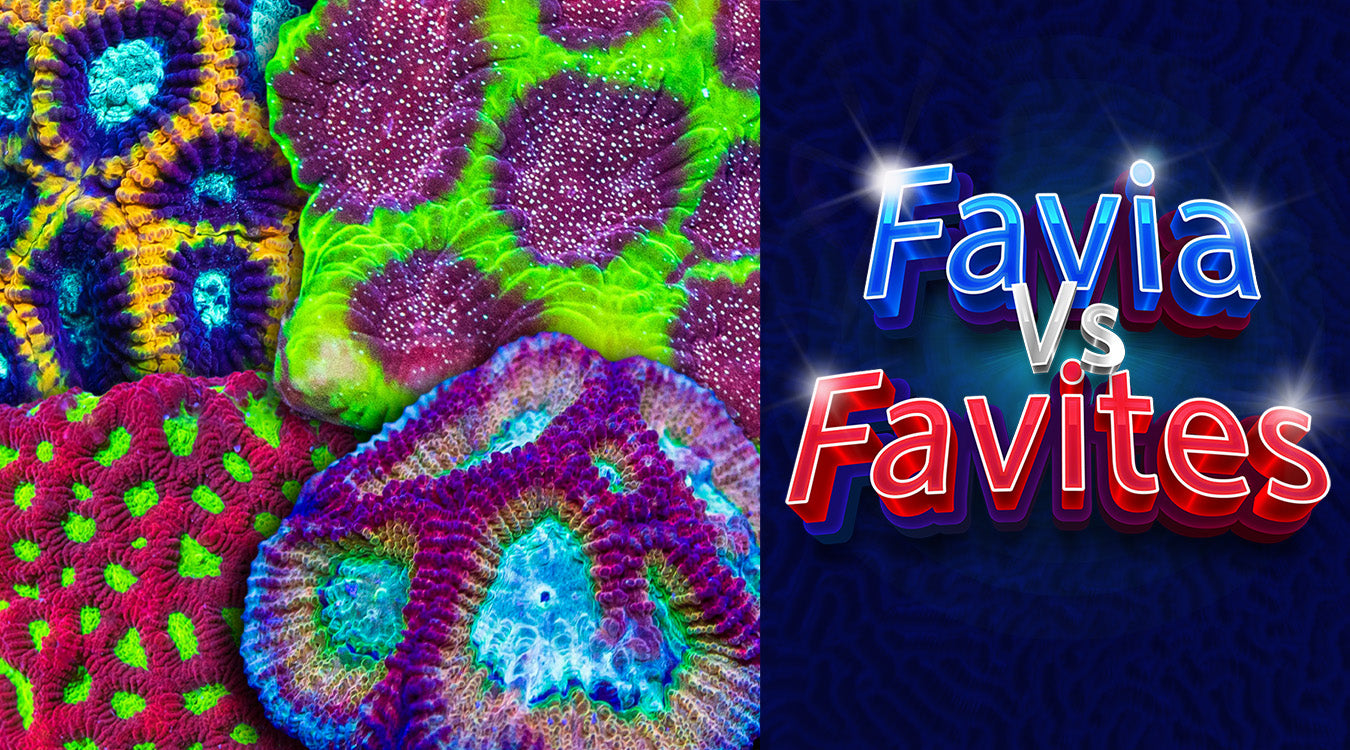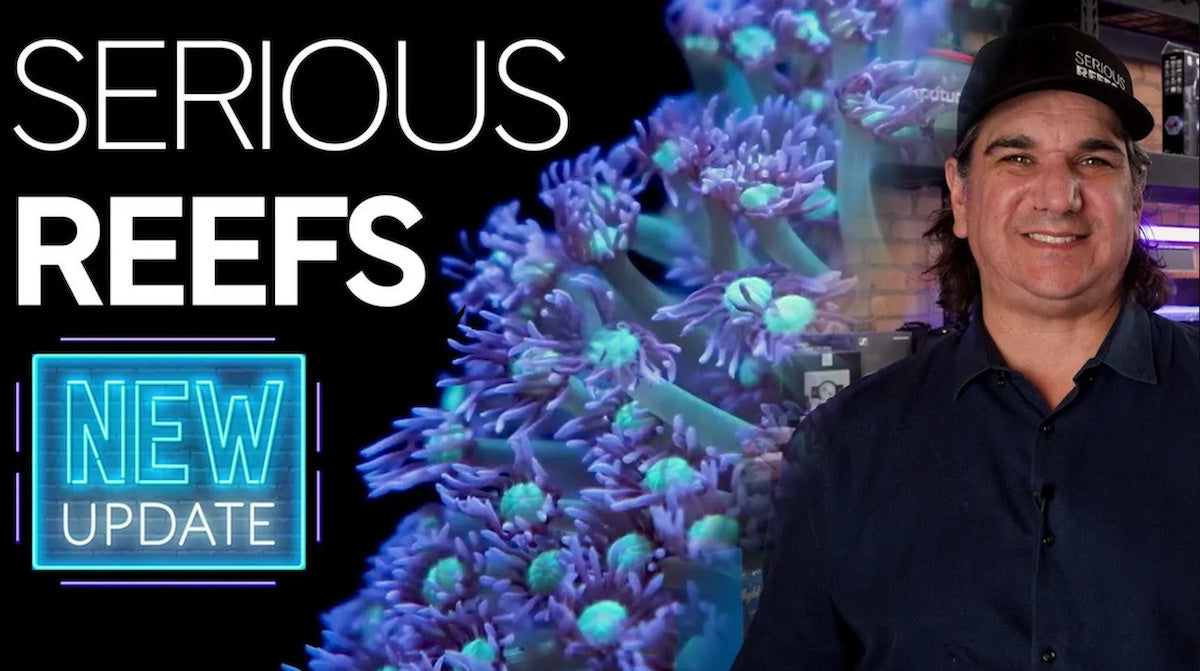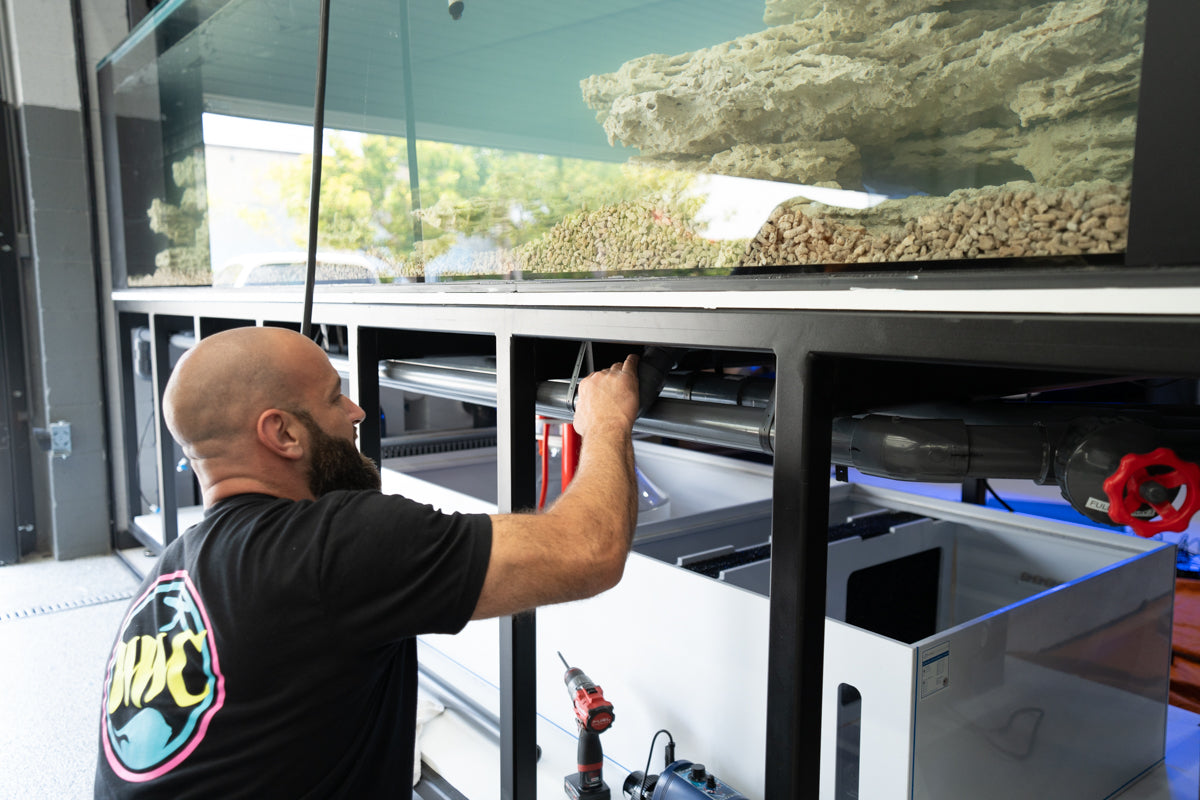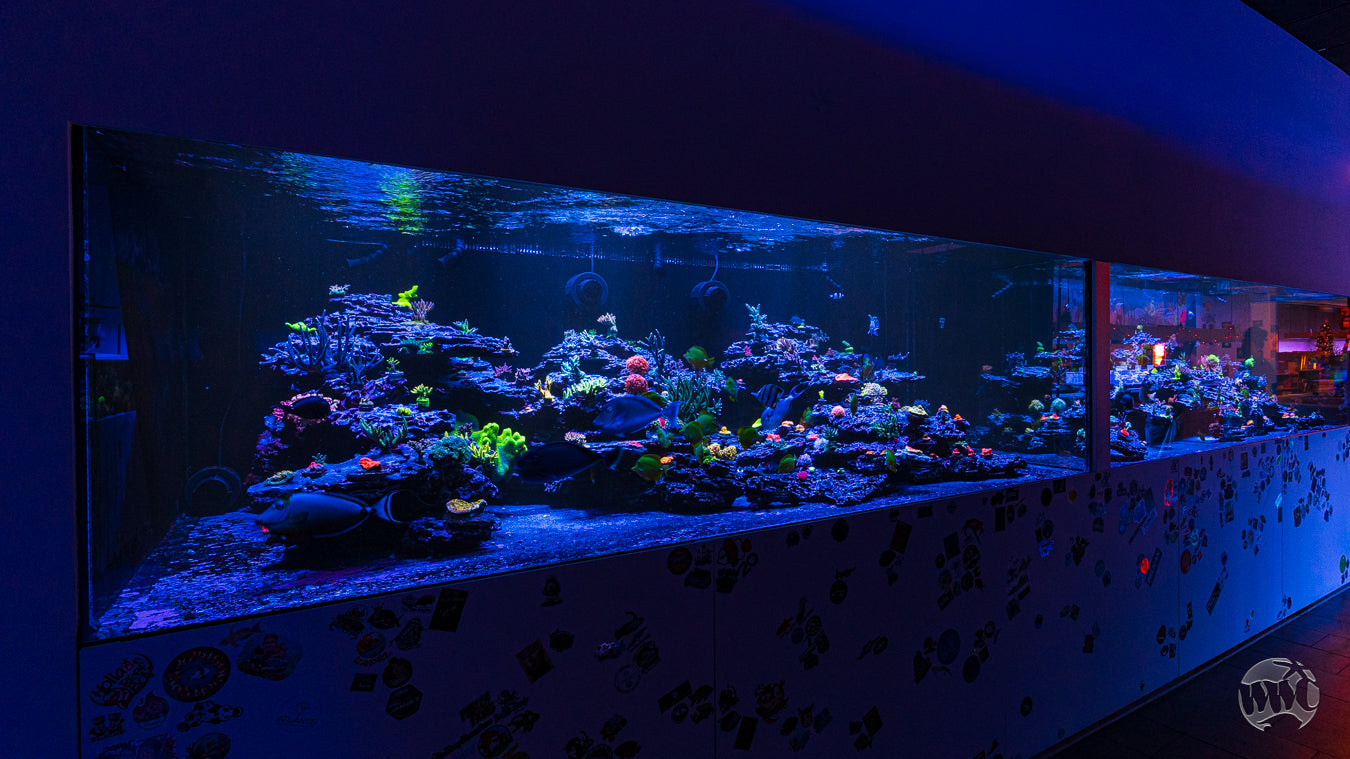Favia vs Favites; Understanding the Difference
“Is this a Favia or a Favites?” This is a question you will see a lot if you spend some time on forums and media posts, and while there are a few concrete descriptions for both, it can still be a bit tricky to navigate. Over the recent years the Faviidae family, which includes both favia and favites has seen taxonomic changes and corals have gotten reclassified which can leave the average hobbyist with a bit of confusion. It is important to understand a little bit about Favia as well as a little bit about Favites as it will make helping to differentiate them easier. Both are types of brain coral and when you look at them there are a lot of similarities. Since they are so similar it’s also important to look closely at the differences between them, because it's the differences that will help to distinguish which one you are looking at.
Favia and Favites are 2 types of sought after corals by the marine aquarium hobbyist. Their large, brightly colored, fleshy polyps catch the eye and add color to any tank. In addition to that, they are commonly found at LFS’s, they are affordable, easy to take care of, and are fairly hearty corals.

While you might sometimes hear them being referred to by these common names- Brain coral, Pineapple coral, Closed Brain Coral, and Honeycomb Coral, you might be more likely to hear some of Favia’s street names such as WWC Space Monkey, All That, Rambo, Lemon Berry, Neon Christmas, Gold Dust, Spitfire, Fantasmo, or Earthquake. No matter what colors you are looking for in a coral, it's likely you will be able to find them in a favia, especially if you are patient. According to WoRMs, both species of Favia we see in the hobby today are related to one parent- Favia De Blainville, If you take the time to look at the species listing you will see there used to be nearly 100 species of Favia, however over the years most of those have gotten reclassified by taxonomists. This leaves us with 2 primary species we see in the hobby today-
Most of the existing, true favia corals are found in the Caribbean, which is closed to collectors, but a few can be found in other places. This is why I say- if you are patient you can find a favia with the colors you are looking for. We look to hobbyists to propagate new color variants from existing species in the hobby, but enough about the taxonomy, let's take a look at some of the husbandry or care aspects of Favia, starting with recommended water parameters:
Recommended parameters
- Salinity: 1.024-1.026
- Ph: 8.0 -8.4
- Alkalinity: 8-10 dkh
- Calcium: 420-450
- Magnesium: 1200-1350
- Nitrate: 5-10
- Phosphate: .05-.1
As a part of maintaining water quality, for fish and corals the above water parameters should be tested regularly, in addition to making sure the temperature is where it should be, especially during the summer and winter months. If you notice any of the water parameters falling below their recommended levels, try doing a water change to get them back in line and consider dosing things like Calcium, Magnesium, and Alkalinity to replenish them as the corals utilize and remove them from the water. In addition to maintaining the appropriate water parameters, another important aspect of coral care is feeding
Many species of coral, including Favia, are photosynthetic thanks to the zooxanthellae they harbor in their cells, but that doesn’t mean you can’t feed them. In fact, giving them additional food can help to boost their growth and their colors. If you’re going to offer them food, consider things that are smaller in size such as mysis, brine, zooplankton, small pellets, and prepared coral food. When you feed, is just as important as what is being fed. Limit feeding to 3-4 days a week and aim to feed in the evenings or when you notice their feeding tentacles are extended.
So, if you decided to add a Favia to your tank, where should you place it? One of the first things to consider is space. While they use their tentacles to bring food in to eat, they can also use sweeper tentacles as a method of self defense. As the name, sweeper tentacle, suggests, these can stretch and sweep out to sting nearby corals, so make sure the placement is a few inches from other corals. In addition to giving it space, water flow and the amount of light it will get should also be taken into consideration. Favia prefers a medium amount of water flow and low to medium light somewhere between 100-150 PAR. Too much light will cause their colors to fade, so if you want to eventually place them in a location with a moderate amount of light, allow them to gradually adjust to the new space before increasing it.
Favites are very similar to Favia, especially with respect to their preferred water quality parameters:
Recommended parameters
- Salinity: 1.024-1.026
- Ph: 8.0 -8.4
- Alkalinity: 8-10 dkh
- Calcium: 420-450
- Magnesium: 1200-1350
- Nitrate: 5-10
- Phosphate: .05-.1
Their similarities don’t stop there. These brain corals also have sweeper tentacles that can be used in self defense. Additionally, they also have mesenterial filaments they can use if they need a more powerful, deadly sting. Both of these are reasons why you should give them several inches of space when placing them in any reef tank. Look for a place for your Favites somewhere in the bottom two-thirds of the tank where they will get low to moderate light (50-100 PAR). If Favites corals get too much light, their colors may fade, so be sure to make any changes gradually. Favites sp. like environments with flow so make sure the placement is in an area that gets a moderate amount of flow.
Having the correct flow makes sure the coral will be kept free of waste, but will also make sure any food, nutrients, or additives placed in the tank will be easily distributed. Favites nutritional needs can be met by feeding a variety of small prepared foods such as coral powders, concentrated liquids, brine, mysis, and even pellet food. While broadcast feeding will work, if you are looking to increase its growth and color, consider target feeding when its tentacles are extended (usually in the evenings) to ensure maximum intake. Favites are a photosynthetic coral which allows them to meet most of their nutritional needs from the zooxanthallae they host.
If you are thinking about adding a Favites to your tank but aren’t sure what one you want, search for some of the following common names: WWC Bullion, WWC Festivus, WWC Magic City, Jason Fox Toro Bravo, and Sector 001.
Now, since you’re looking at this article in the hopes of understanding the difference between Favia and Favites, let's go over a little bit of coral nomenclature and then and then take a look at Charlie Veron’s descriptions.
Corallite(s): These are the skeleton of each individual coral polyp.
Monocentric: Single centered and mouth. A term to describe corallites.
Coenosteum: This is the collection of corallites that links the colony together as a whole.
Polyps: The fleshy tissue of the coral. That sits inside/ on top of the coral
Plocoid: Toothlike shaped corallites, where the walls are not shared.
Cerioid: Bowl like shaped corallites, where the walls are shared.
Paliform: Pillar like arms on the inside edge of the coral’s septa
Now for the scientific descriptions. In 1986 Veron described Favia sp. as “Colonies are usually massive, either flat or dome-shaped. Corallites are monocentric and plocoid: each corallite projects slightly above the colony surface and has its own wall. Daughter corallites are formed by intratentacular division. Polyps are extended only at night and have a simple circle of tapering tentacles, often with a pigmented tip.”
Similarly, he describes Favites sp. as having the following characteristics: “Colonies are usually massive, either flat or dome-shaped. Corallites are monocentric and cerioid, occasionally subplocoid. Adjacent corallites mostly share common walls. Paliform lobes are often poorly developed. Polyps are extended only at night and have a single circle of tapering tentacles like Favia.”
TLDR
While it’s easier to tell Favia and Favites corals apart when looking at their bare skeletal structure, a close look at their tissue covered skeletal walls will allow you to tell the difference. Favites coral polyps will share skeletal walls, whereas the Favia do not. Some hobbyists who have kept both Favia and Favites, have noticed that Favites tend to grow more rapidly and have smaller polyps than Favia.




